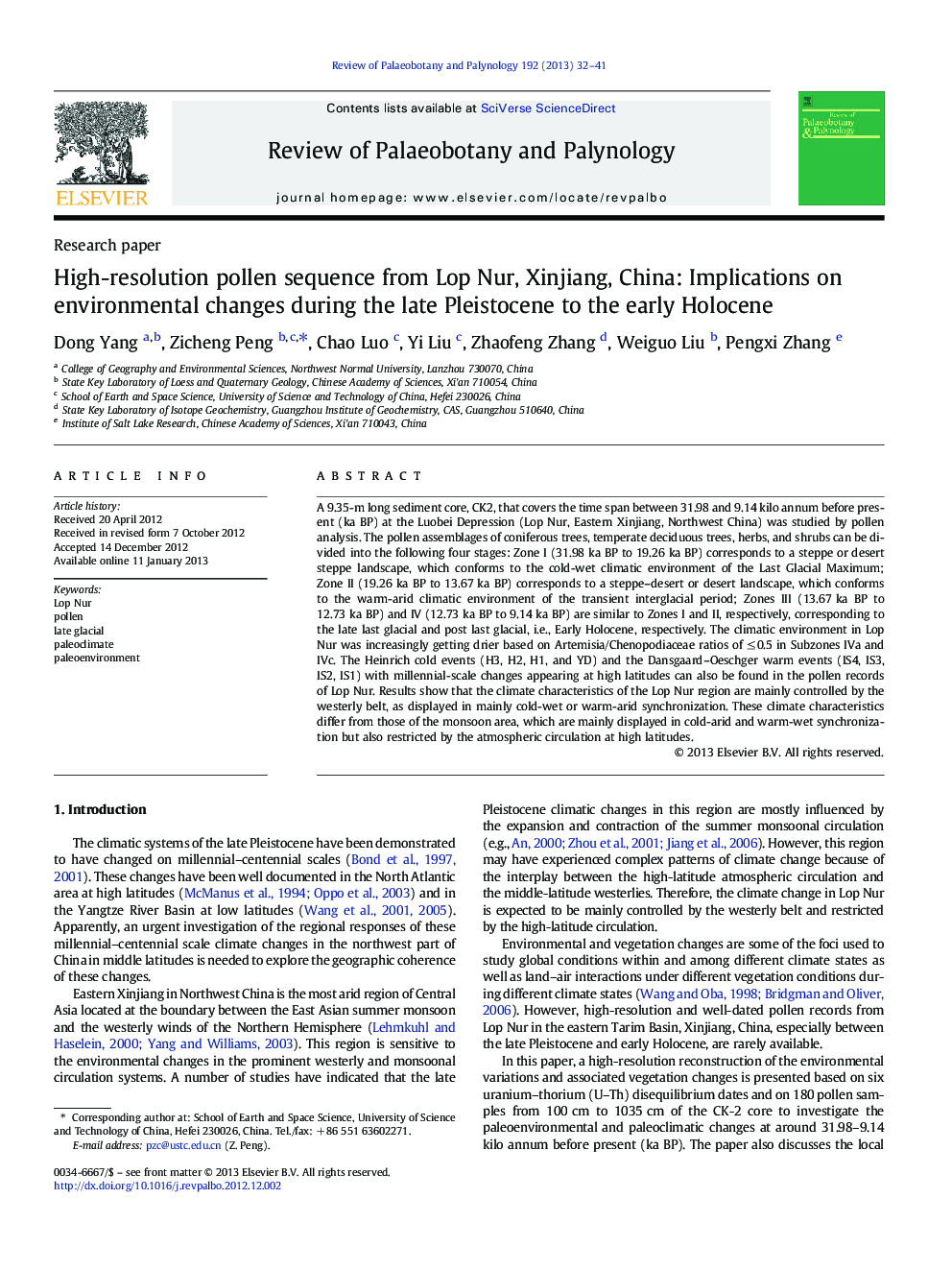| Article ID | Journal | Published Year | Pages | File Type |
|---|---|---|---|---|
| 4750404 | Review of Palaeobotany and Palynology | 2013 | 10 Pages |
A 9.35-m long sediment core, CK2, that covers the time span between 31.98 and 9.14 kilo annum before present (ka BP) at the Luobei Depression (Lop Nur, Eastern Xinjiang, Northwest China) was studied by pollen analysis. The pollen assemblages of coniferous trees, temperate deciduous trees, herbs, and shrubs can be divided into the following four stages: Zone I (31.98 ka BP to 19.26 ka BP) corresponds to a steppe or desert steppe landscape, which conforms to the cold-wet climatic environment of the Last Glacial Maximum; Zone II (19.26 ka BP to 13.67 ka BP) corresponds to a steppe–desert or desert landscape, which conforms to the warm-arid climatic environment of the transient interglacial period; Zones III (13.67 ka BP to 12.73 ka BP) and IV (12.73 ka BP to 9.14 ka BP) are similar to Zones I and II, respectively, corresponding to the late last glacial and post last glacial, i.e., Early Holocene, respectively. The climatic environment in Lop Nur was increasingly getting drier based on Artemisia/Chenopodiaceae ratios of ≤ 0.5 in Subzones IVa and IVc. The Heinrich cold events (H3, H2, H1, and YD) and the Dansgaard–Oeschger warm events (IS4, IS3, IS2, IS1) with millennial-scale changes appearing at high latitudes can also be found in the pollen records of Lop Nur. Results show that the climate characteristics of the Lop Nur region are mainly controlled by the westerly belt, as displayed in mainly cold-wet or warm-arid synchronization. These climate characteristics differ from those of the monsoon area, which are mainly displayed in cold-arid and warm-wet synchronization but also restricted by the atmospheric circulation at high latitudes.
► A high-resolution sequence of the pollen assemblages ► The sequence can be divided into four stages. ► The climate characteristics are mainly controlled by westerly belt. ► The climate features are also restricted by high latitude atmospheric circulation.
